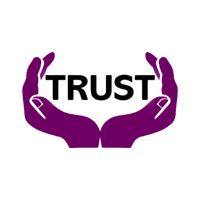Enhancing PHI De-Identification for Diverse Patient Populations Protecting patient privacy is at...
Going Beyond Atlas: Building a Learning Health System
The concept of a Learning Health System (LHS) – where data seamlessly flows to improve patient care and drive research – is gaining traction. However, existing tools like Atlas, while valuable for collaborative research across institutions, often fall short of meeting the unique needs of individual health systems.
Episode 3 of our Learning Health System podcast Explores the challenges of using Atlas within a single health system and highlights the innovative approach developed at Montefiore.
Limitations of Atlas
Atlas, a popular platform for observational health research, primarily focuses on:
- De-identified data: Limiting its applicability for many internal research projects that require access to identifiable patient information.
- External collaboration: It's designed for collaborative research across institutions, neglecting the need for integration with internal systems like EHRs, registries, and biorepositories.
- Limited compliance features: Atlas doesn't adequately address the complexities of internal IRB reviews, data security, and compliance requirements within a healthcare system.
Building a True Learning Health System
Montefiore has addressed the limitations of Atlas by:
- Handling diverse data types: Seamlessly integrating identified and de-identified data, clinical notes, images, and data from external sources.
- Deep system integration: Connecting with internal systems like EHRs, registries, and biorepositories, enabling researchers to link patient data from various sources.
- Robust security and compliance: Implementing robust security measures, audit trails, and integration with IRB systems to ensure compliance and protect patient privacy.
- User-friendly interface: Providing a user-friendly interface that simplifies study design, data extraction, and analysis for researchers.
- Focus on patient empowerment: Enabling patient-centered consent and allowing patients to control how their data is used in research.
Key Differentiators
- Handling identified data: The system effectively manages both identified and de-identified data, allowing for a wider range of research applications.
- Integration with internal systems: Seamlessly integrating with various internal systems enhances research capabilities and enables more comprehensive analyses.
- Enhanced security and compliance: Robust security measures and integration with IRB systems ensure responsible data usage and protect patient privacy.
- Advanced data extraction and analysis: The system facilitates the extraction of relevant data, aligning with study designs and enabling efficient analysis.
- Patient-centered approach: The system prioritizes patient empowerment by enabling patient-centered consent and allowing patients to control their data usage.
Conclusion
Building a true LHS requires a more comprehensive and integrated approach than what existing tools like Atlas can provide. The innovative approach developed at Montefiore demonstrates how a health system can overcome these limitations by creating a platform that is tailored to its specific needs and priorities. This approach can serve as a model for other health systems seeking to leverage data for improved patient care and impactful research.
%20Learning%20Healthcare%20480x120.webp?width=480&height=120&name=Cognome%20logo%20-%20(Machine)%20Learning%20Healthcare%20480x120.webp)




